Mongolia has had the best COVID-19 response in the world. Not only do they have zero deaths, they have zero local transmissions. Mongolia didn’t flatten the curve or crush the curve — they just like ‘fuck curves’. In Mongolia, there simply wasn't an epidemic at all.
And no, they didn’t just get lucky.
Starting in January, Mongolia executed a perfect public health response, and they have never let up the pressure since. COVID-19 did not just leave Mongolia alone. Mongolia showed it the door.
For this all this hard work, however, they get little credit. Nobody’s talking about the ‘Mongolian example’. Instead, we talk about total failures like Germany or Sweden. Like I’ve said, success is ZERO, and Mongolia is as zero as you can get.
Just look for yourself. See the actions they took, when they took them, and how effective it was. I think you’ll be as mind-blown as I was. Mongolia’s response was intense, and somehow involved 30,000 sheep.
Wait, Mongolia?
But wait, you’ll say. Mongolia? Mongolia with two people per square kilometer? Remote, isolated Mongolia? Wouldn’t COVID just show up and find no one there?
No.
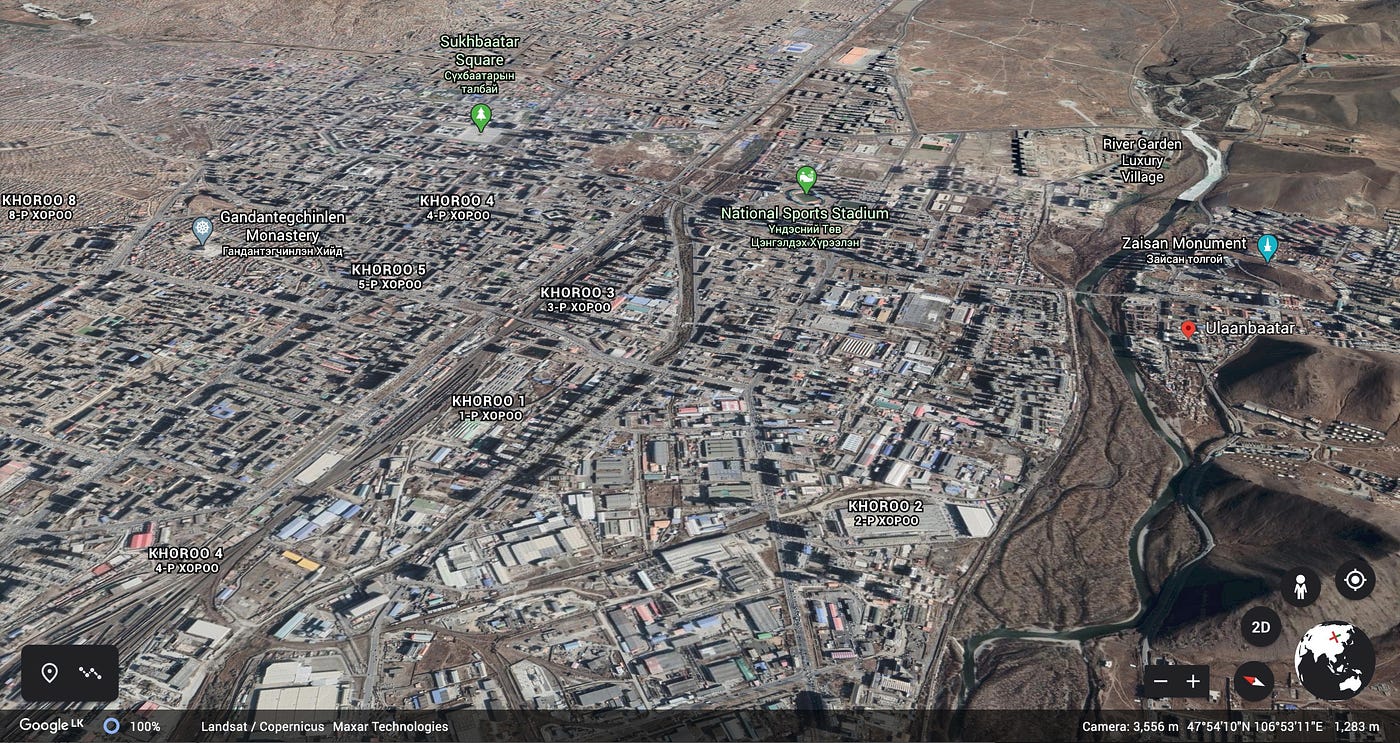
The city of Ulaanbaatar. Urban enough for COVID-19 to munch on
Density
It’s true that Mongolia is the least densely populated nation on Earth. As a nation, they’re pretty socially distant by default. However, their capital Ulaanbaatar has an urban population of 1.5 million people. That’s quite enough for COVID-19 to snack on.
In fact, Ulaanbaatar (307 people per km²) has a similar density to Bergamo, Italy (400 per)— the epicenter of the outbreak in Italy; one of the worst-hit places in the world. Low density didn’t save Bergamo. On its own, it won’t save anybody.
What about sheer remoteness? Where is Mongolia anyways?
Remoteness
Modern Mongolia is not actually remote. My wife has been there and I asked how. She shrugged and said they just took a flight.
I guess it would take a while by horse, but it’s just a two-hour flight from Beijing. There were daily connections with Wuhan. Ulaanbaatar is connected to China and Russia by rail and road, and there’s constant movement across the borders. If the first wave from China didn’t get them, the second from Russia would.
So it wasn’t remoteness that saved them either.
The Bias
There’s a bias here, which I’m also subject to. We give agency to ‘developed’ countries — “oooh look Angela Merkel is a scientist” — but assume that ‘developing’ nations just got lucky. We say it’s the weather, or population density, or some environmental factor of luck.
“They couldn’t possibly have saved their own asses, aren’t they poor?”
This causes some serious cognitive dissonance in western commentators.
“Poor… but not dead… must be the weather.”
Countries are used to giving aid to places like Mongolia, to sending advisors. It simply does not compute that they should have been getting advice from Mongolia the whole time.
But just look at the facts. Look at the numbers on the board. Look at what Mongolia did, when they did it, and tell me it’s just luck. Actually don’t. I’ll get pissed. They worked really hard and it’s plain for anyone to see.
Coronavirus didn’t leave Mongolia alone. They killed it. Ded.
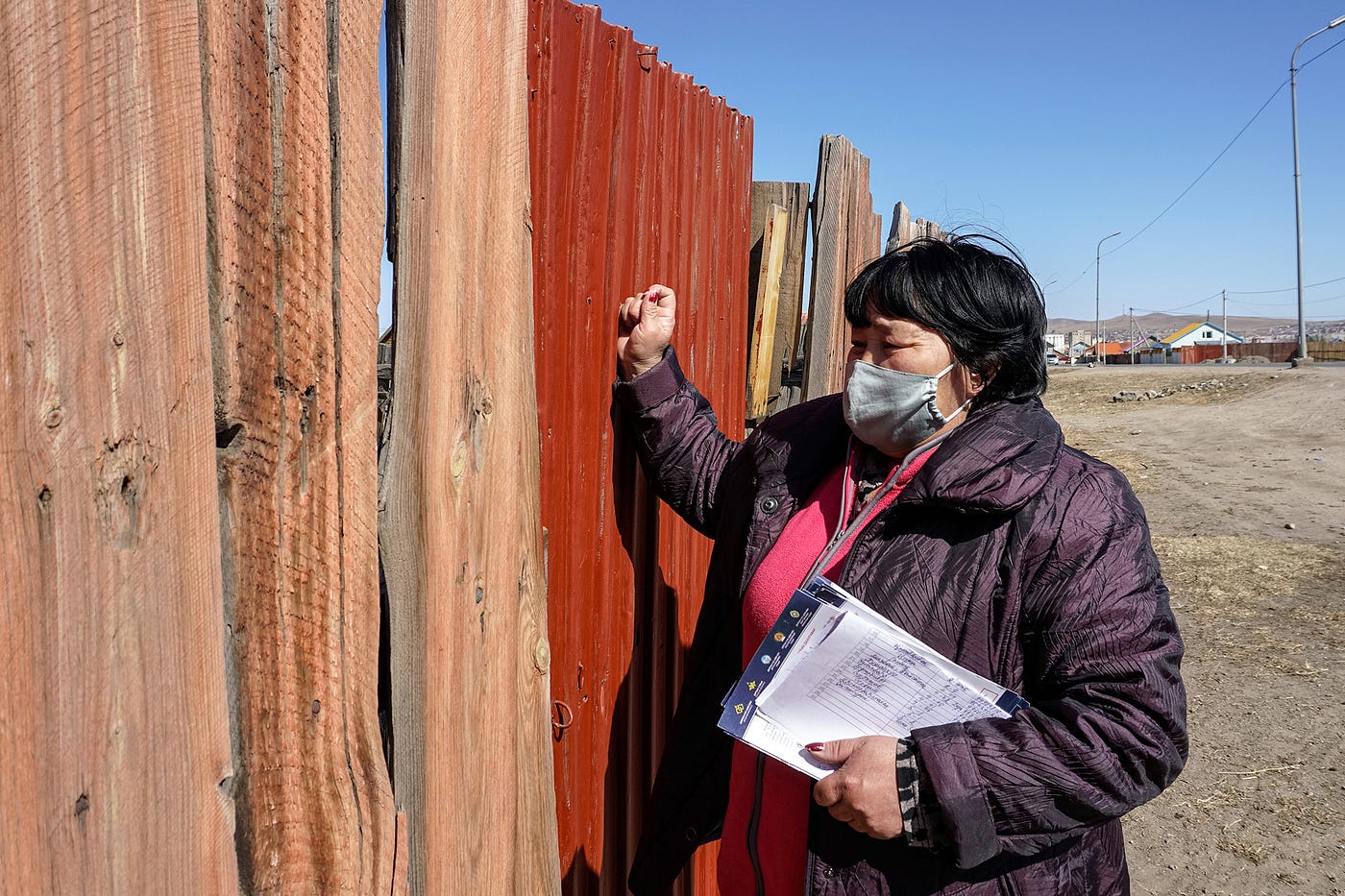
Altantsetseg Tsedevdorj knocks on a door in Mongolia’s Darkhan-Uul province, hoping to educate the homeowners on how to protect their family from the spread of the coronavirus. (Myagmarsuren Battur, Global Press Journal)
Imagine that you could go back in time to January 23rd with the horse race results and, I dunno, the new iPhone. People believe you. China has just shut down Hubei Province, the largest cordon sanitaire in human history. What would you scream to your leaders? What would you tell them to do?
You’d tell them that this was serious and that it’s coming for sure. You’d tell them to restrict the borders now, to socially distance now, and to get medical supplies ready, also now. You’d tell them to react right now, in January itself. That’s 20/20 hindsight.
That’s exactly what Mongolia did, and they don’t have a time machine. They just saw what was happening in Hubei, they coordinated with China and the WHO, and they got their shit together fast. That’s their secret, not the elevation. They just weren’t dumb.
January 22

Health Minister Davaajantsan Sarangerel (right) with WHO representative Sergey Diorditsa
Some people think the WHO is like a paramilitary organization, busting into countries, investigating, telling everyone what to do. That’s not how they work. They’re just there to help. You have to listen to them, and you have to let them in. Mongolia did. On January 22nd, the Mongolian Health Ministry held a press briefing with the WHO to announce that shit was real.
They said there was human-to-human transmission (AKA, this is contagious AF) and that they had begun screening people and getting prepared.
If I could tell you the one secret to Mongolia’s success it’s this:
Mongolia was putting its big boy pants on in January. That made all the difference.
January 24
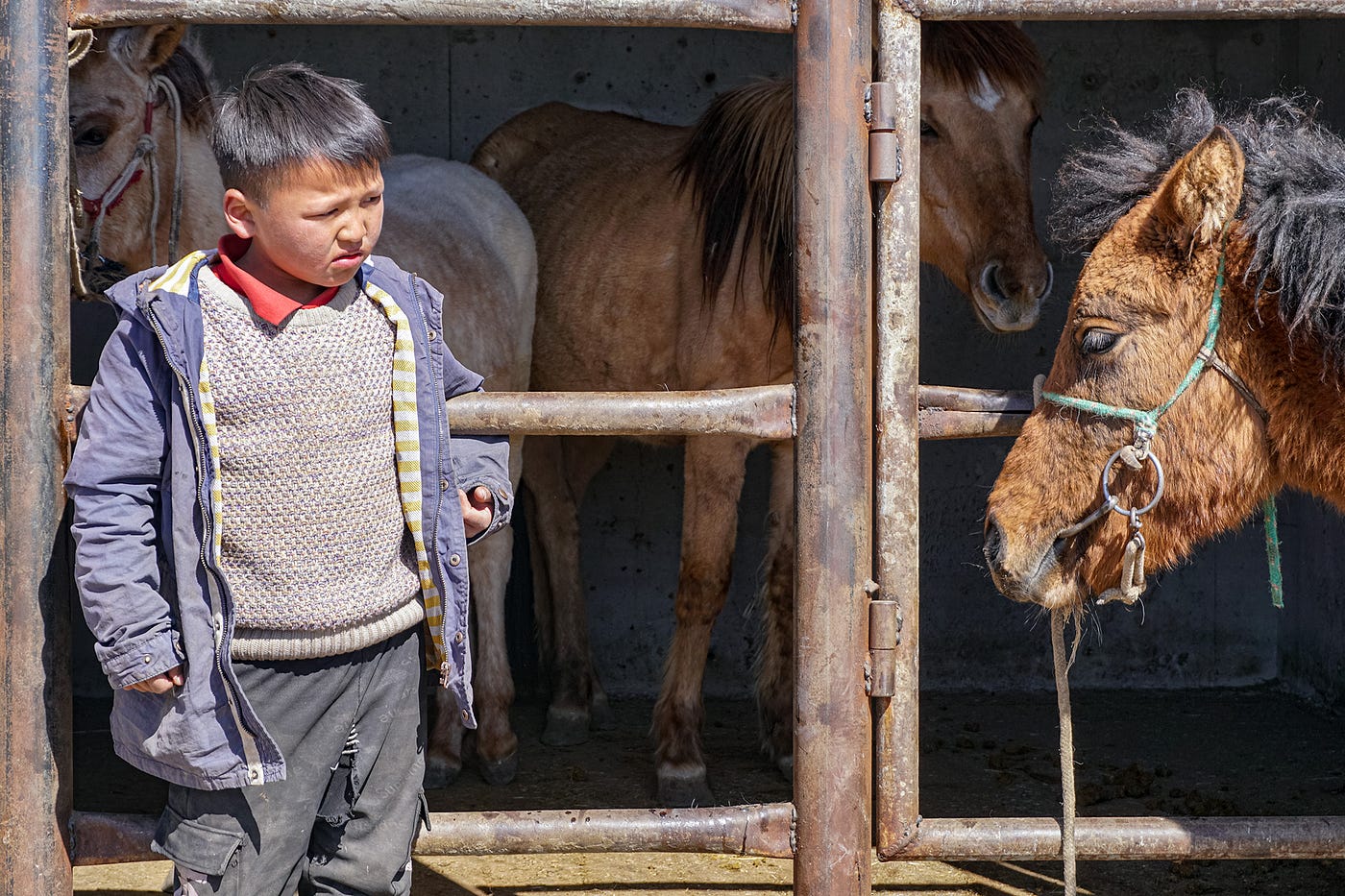
/Irmuun Bayanmunkh, 7 is learning to ride horses at his uncle’s house while schools are shut down due to the spread of the coronavirus. In late January, Mongolia was one of the first countries to secure borders and close schools. (Myagmarsuren Battur, Global Press Journal)
At this point, flu season was already hitting Mongolia’s children hard, so the first thing they did was protect their young. Today we say that COVID-19 spares the young but A) we don’t know that in the long-term and B) we definitely didn’t know it then.
If I hear a vehicle coming around a corner I don’t wait to see the thing, I just move my kids. Mongolia moved their kids. They announced that schools would be shutting down on the 27th.
Another thing I want you to note is this. Mongolia announced almost all closures in advance. They weren’t like “oh shit, things are on fire get all your food by midnight” (I’m looking at you India). Because they were prepared and planned ahead, they were able to gradually lockdown without all the chaos.
This is also when Mongolia told people to wash hands, wear masks, and all the other things many of us only heard later. Mariah Carey didn’t teach Americans how to wash their hands until mid-March.
January 26
Another thing to note, Mongolia had zero cases at this point. Everyone was looking at a global dumpster fire being like, “well, my dumpster’s not on fire.” This was dumb. Mongolia was smart.
Three days after Hubei, the Mongolian cabinet held a special meeting, because they were taking this seriously. At this meeting, they decided to:
- Close universities
- Restrict vehicle crossings (not yet rail or air)
- Prohibit public events
- Release funds for medical equipment and personnel
Mongolia’s growth is almost completely export-driven, so they were taking a huge economic hit here, especially with zero cases. However, they were not like the dinosaurs in the west, looking at an asteroid saying “but the economy!”
Mongolia didn’t negotiate with the virus, offering up their grandparents. They just told the virus to fuck off and saved everybody. Yes, their economy was hammered, but this was unavoidable. They saved as much of their economy as possible. They lived to fight another day.
This is textbook public health. Throughout this crisis Mongolia always looks like they’re overreacting, which is exactly what you’re supposed to do. That’s the only way to fight a virus that only shows up two weeks later. As Dr. Xifeng Wu said:
“Overreacting is better than not reacting.”
Do you know how Mongolia stayed at zero local cases? They acted like there were already a thousand. Also, and I don’t know if you’ve heard but:
IT’S STILL JANUARY!!!
January 27
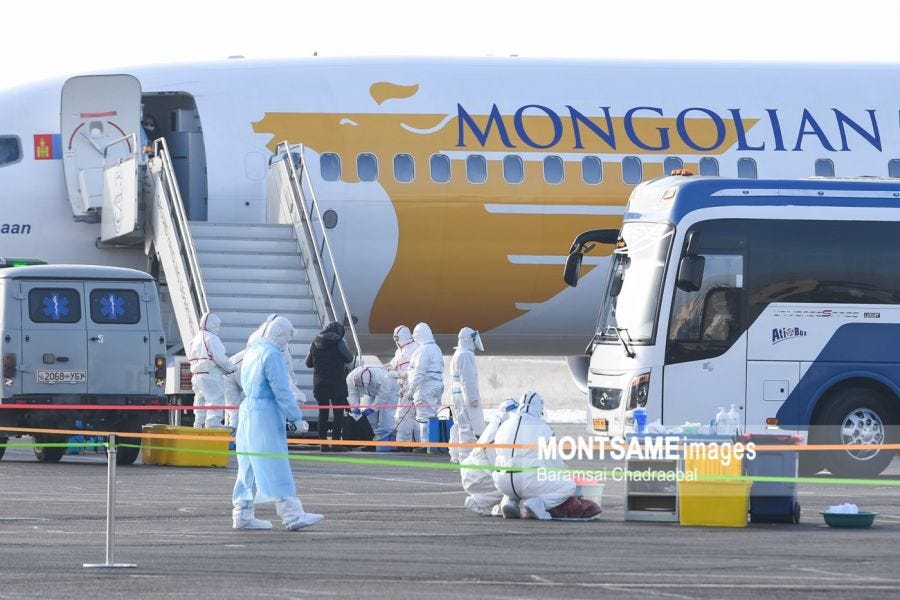
/Mongolia getting its students out of Wuhan/
So at this point, with zero cases, Mongolia starts actually importing cases, on purpose. In a slow, controlled manner, they start repatriating Mongolians.
Other countries did this stupidly, allowing infected citizens to fly back unchecked while banning foreigners, as if the virus carries a passport. Mongolia deliberately and cautiously repatriated people, testing and quarantining them as they came in.
On the 27th, they started negotiating the return of 31 students from Wuhan. On February 1st they flew them back and quarantined the lot, including the flight crew. This began an ongoing process of repatriating and quarantining Mongolians, first for 14 and then 21 days. There wasn’t a mad rush back, they controlled it. This enabled them to manage imported cases and, again, reduce local transmission to zero.
I’ll pause here for a minute. This is January. Mongolia was doing all this in January, when most countries were doing nothing. Like the story of the ant and the grasshopper, or Jon Snow, they knew that winter was coming and they acted accordingly.
What was your country doing in January? How many lives could we have saved, if we’d just looked to Mongolia then?
February
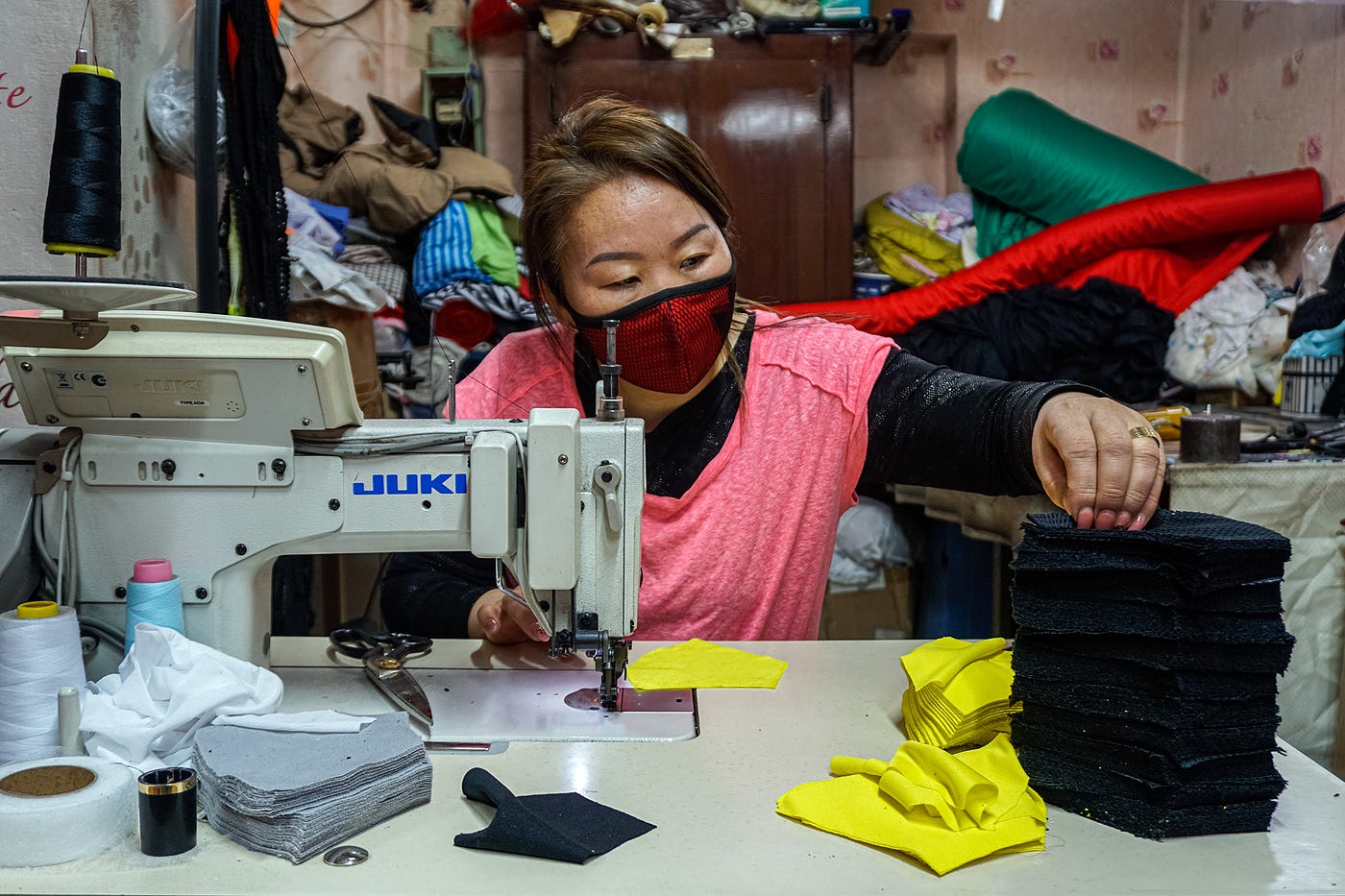
Khatantuul Bat-Ochir sews cotton face masks to sell to pharmacies in Ulaanbaatar, Mongolia. The Mongolian Ministry of Health recommends citizens wear face masks to prevent the spread of the coronavirus. After facing a shortage of disposable masks, the government set standards for cotton masks, allowing seamstresses around the country to sew masks and supply them to pharmacies. (Myagmarsuren Battur, Global Press Journal)
Throughout February, Mongolia was furiously getting ready — procuring face masks, test kits, and PPE; examining hospitals, food markets, and cleaning up the city. Still no reported cases. Still no let-up in readiness. No one was like “it’s not real!” or “burn the 5G towers!”
The country also suspended their New Year celebrations, which are a big deal in Asia. They deployed hundreds of people and restricted intercity travel to make sure, though the public seemed to broadly support the move.
Again — and I’ll keep saying this until March — there were still NO CASES. If you want to know how Mongolia ended up with no local cases, it’s because they reacted when there were no local cases. And they kept acting.
For example, when they heard of a case across the border (ie, not in Mongolia) South Gobi declared an emergency and put everyone in masks. The center also shut down coal exports — a huge economic hit, which they took proactively.
As you can see, at every turn they’re reacting like other countries only did when it was too late. This looked like an over-reaction, but in fact, Mongolia was always on time.
Other countries, however, were not as proactive as Mongolia, and I’m talking about the organized countries here, not the bleach drinkers of the west. In February, Mongolia suspended flights to Korea and Japan.
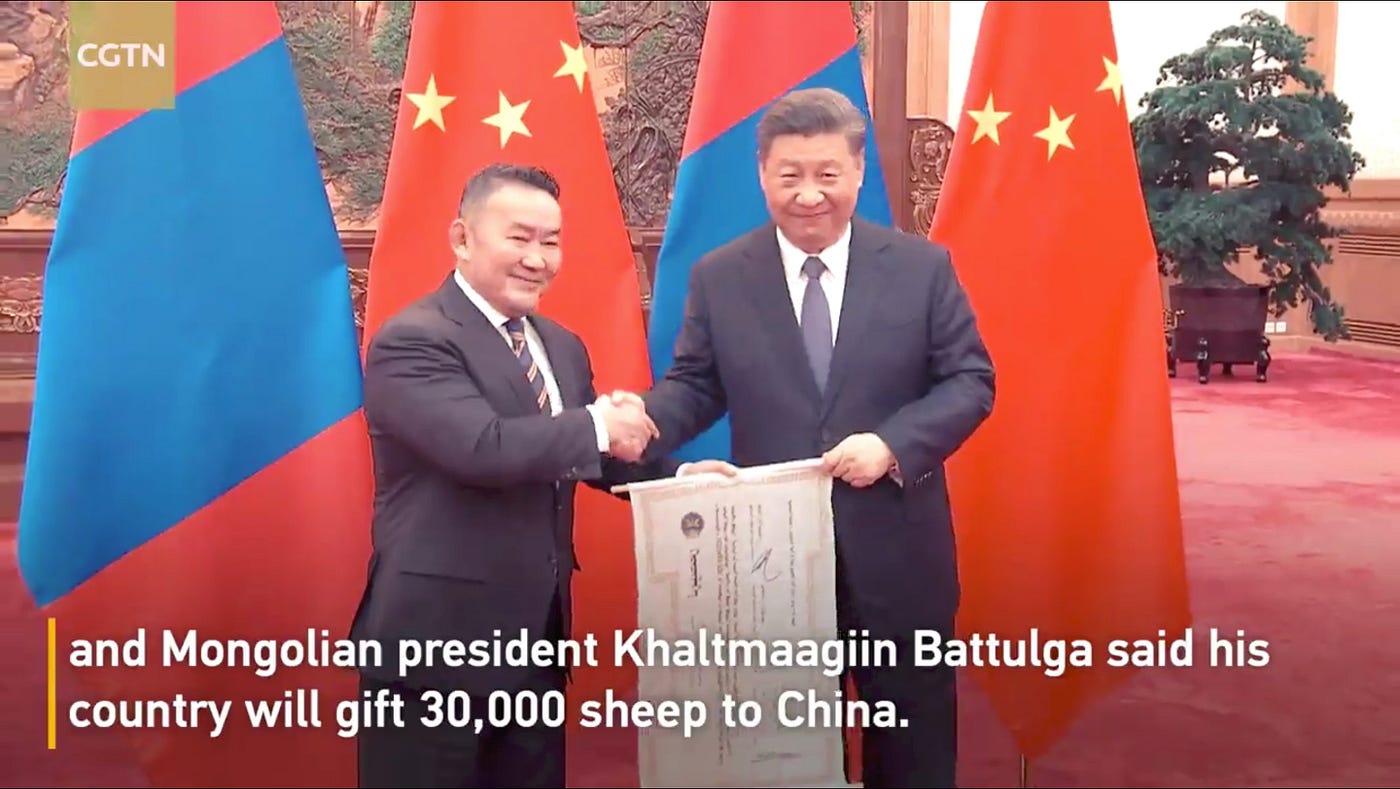
/Note: as an update, apparently giving sheep is a traditional gesture of support during hard times, and someone visiting China at that isolating time would have meant a lot./
At this time they were also helping China, specifically by sending 30,000 sheep. When President Kh. Battulga returned from that trip, he himself went into quarantine for 14 days.
March
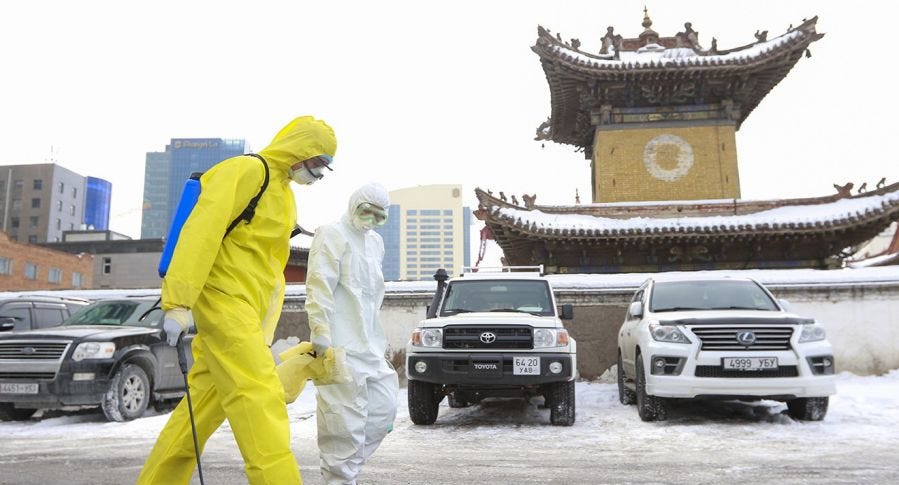
/After their first case, Mongolia reacted like it was ten thousand/
That’s leadership. I’m not saying that I agree with the former Sambo wrestler and owner of a company named Genco (from The Godfather) on everything. I really don’t know, but even an outsider observer can see that his government led on COVID-19, and that he led by example. The President himself went into quarantine, which is a public health communication in itself.
At this point, Boris Johnson was proudly shaking hands with COVID patients. Meanwhile, the Mongolian President is in quarantine and his country has stockpiles of tests and PPE. Perhaps most importantly, there were other competent people and institutions chairing meetings and leading.
Then it happened.
On March 10th, Mongolia recorded its first confirmed case of COVID-19. A French national who had arrived from Moscow on March 2nd. Mongolia was ready. They isolated his entire office and the horse he rode in on (it was a train). They quarantined the entire aimag (district) and shut down all trains, cars, and public transport. Mongolia went into partial lockdown, shutting a range of shops. They decontaminated 9.2 million square meters, across 6,000 locations. They decontaminated some places twice.
One case. They did this for one case. That’s why they have no local transmission. It’s not the population density. That advantage can be shattered by one train ride. They just don’t let transmission happen.
Coronavirus didn’t leave Mongolia alone. They killed it.
Today
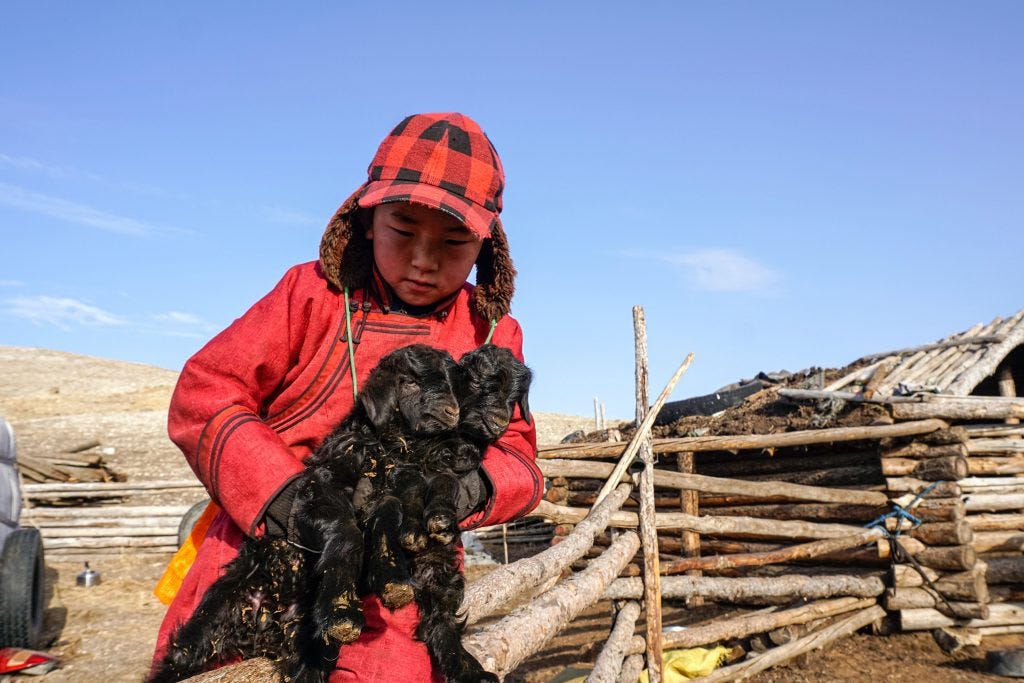
Tuvshinbayar Ganbaatar, 7, holds a pair of lambs at his family’s farm in Murun. Tuvshinbayar has been helping with his family’s goat and sheep herds since January. (Dolgormaa Sandagdorj, GPJ Mongolia)
I’d go on, but I hope you get it by now. At the slightest provocation from COVID-19, Mongolia would — in public health terms — go apeshit. If there were zero cases, they reacted like it was a thousand. With one case, they reacted like it was ten thousand.
Given a virus that multiplies exponentially, this is exactly what you’re supposed to do. Either you’re going apeshit or the virus is. Those are the only choices, at least if you want to win.
Another thing I’ll note after talking to more people is that Mongolian people made this happen. In my country, for example, getting this level of compliance early in the epidemic would have been nearly impossible. For many reasons, Mongolian people felt responsible for each other, understood what was going on, and made this response happen.
Even today, with zero transmission, they have not let down their guard. On May 7th, they simulated a lockdown, conducting a drill involving 150,000 citizens and 3,500 officials. Again, they didn’t need to be locked down, they just wanted to be prepared.
In medical terms, this is bad-ass. This is taking public health to the level of a martial art. Mongolia should be an inspiration to us all.
Today Mongolia has 140 cases, all imported. To be completely honest, I’ve seen these numbers myself and just shrugged. Must be the elevation, I thought, or the density.
I was wrong. The now fallen West and even the new leaders of East Asia were still behind Mongolia. Of all countries in the world, Mongolia has faced great risk and executed a nearly perfect response.
Of course, it hasn’t been easy. The Mongolian economy has suffered along with the global economy, and many Mongolians were poor to begin with. According to a contact in Mongolia, after four months of constant alertness, people are just tired. And now there’s a potential second wave from Russia. It’s hard.
But that’s leadership.
Mongolia has shown global leadership. Not just zero deaths, zero local cases. Just zero. Nothing happened on their soil. We should all be getting advice from Mongolia and, if possible, some sheep.
Source: Indi Samarajiva, May 18

